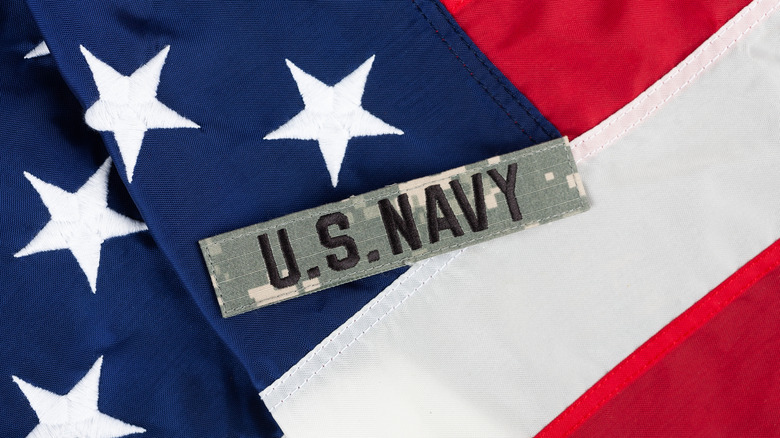The U.S. Navy was formed by the Continental Congress in October 1775, and its first ship was named the Alfred after the ninth-century Saxon king. Other early vessels were named for important figures like Sir Walter Raleigh and John Hancock, or locations such as Boston and Virginia. Others paid tribute to concepts important to the young nation, like Independence, Diligence, and Enterprise. The process of naming Naval ships was formalized in March of 1819, when Congress assigned this duty to the secretary of the Navy under the direction of the president. Three classes of ships were established, with vessels in each respective class named for U.S. states, rivers, and cities. It was also stipulated that no two ships were to be given the same name; that provision is still in place today.
Advertisement
The secretary works with the Naval History and Heritage Command (NHHC), active sailors, veterans, and members of the public to choose names for ships. Ship naming conventions follow specific patterns based on type. For example, the Navy’s 11 aircraft carriers are named after significant American figures, with nine honoring former Presidents. Submarines often bear the names of states or sea creatures. These naming systems help preserve naval heritage and pay tribute to important aspects of U.S. history. Over time, modifications have been made to accommodate new ship types and honor individuals who have contributed to the nation’s security. Such modifications were quite evident during times of war when the country had to build or acquire new ships.
Advertisement
Wars and their influence on ship nomenclature
Another important aspect of this naming system is the use of the prefixes USS for “United States Ship” and USNS for “United States Naval Ship.” The former is used to indicate a commissioned ship, while the latter is for civilian-manned, non-commissioned ships in active service. Nevertheless, there are units that do not use the prefixes and simply go by their assigned names.
Advertisement
Major conflicts, particularly World War I and World War II, greatly influenced how U.S. Navy ships were named. During World War I, the need for U.S. Navy minesweepers to clear naval minefields resulted in a new class of ships requiring unique names. Under the guidance of then-Assistant secretary of the Navy Franklin D. Roosevelt, bird names were chosen as the primary naming source for these ships. This tradition continued well into World War II and beyond.
The outbreak of the Second World War led to an even larger expansion of the fleet, which meant that more naming conventions had to be introduced. Some destroyer escorts were named in honor of naval personnel killed in action. Additionally, ships lost in battle were often honored by having their names reassigned to new vessels. This practice helped maintain the legacy of fallen warships and their crews. Interestingly, the heavy cruiser USS Canberra was a unique case, as it was named in honor of the sunken Australian cruiser Canberra to honor the alliance between the two nations during the war.
Advertisement
Origins and themes of US Navy ship names
The advent of nuclear-powered and guided-missile warships following World War II also led to significant changes in naming traditions. The first fleet of ballistic missile submarines bore the names of key figures in American history to highlight their role as strategic deterrents. The introduction of supercarriers saw the continuation of naming ships after presidents and national figures, reinforcing the influence of wartime legacy in ship names. Aircraft carriers have historically been named after battles (such as the USS Midway) or famous American leaders (like the USS Ronald Reagan). However, exceptions exist, such as the USS Wright, which was named in honor of aviation pioneers Wilbur and Orville Wright.
Advertisement
Submarines have traditionally followed a different pattern. Early submarines were named after sea creatures, such as the USS Seawolf, a vessel that changed underwater warfare. The naming convention for these submarines later shifted to states. Attack submarines of the Los Angeles class continue to be named after cities, with occasional exceptions like the USS Hyman G. Rickover, named for the “Father of the Nuclear Navy.” Auxiliary and support ships also have distinctive naming patterns. Submarine tenders honor submarine pioneers, while ammunition ships are named after volcanoes and words related to fire and explosives. Fleet tugs bear names of Native American tribes, and oilers (naval tankers) are named after rivers. These diverse naming conventions ensure that a broad spectrum of American history, geography, and military service is represented in the fleet.
Advertisement
New Navy ships, same naming conventions
At present, the U.S. Navy still follows its traditional naming conventions, christening vessels with names honoring important places, past leaders, servicemen, and events. Under Carlos Del Toro, who was named as secretary of the Navy in 2021, several aircraft carriers, destroyers, and other ships were named using the traditional U.S. Navy nomenclature.
Advertisement
In 2024, a towing and rescue ship was named USNS Cherokee Nation after the Native American group, particularly its members who had served in the Navy and Marine Corps. In the same year, a guided-missile destroyer was christened as the USS Patrick Gallagher, after an Irish citizen who fought in the Vietnam War as a U.S. Marine. Additionally, a submarine was named the USS Arkansas before the year ended.
Before vacating his post in January, Del Toro christened an amphibious transport dock as the USS Harrisburg and two new aircraft carriers — the USS William J. Clinton and USS George W. Bush — after past presidents. Naval Academy graduate Terence Emmert is currently acting as secretary of the Navy, with nominee John Phelan awaiting confirmation hearings.
Advertisement








